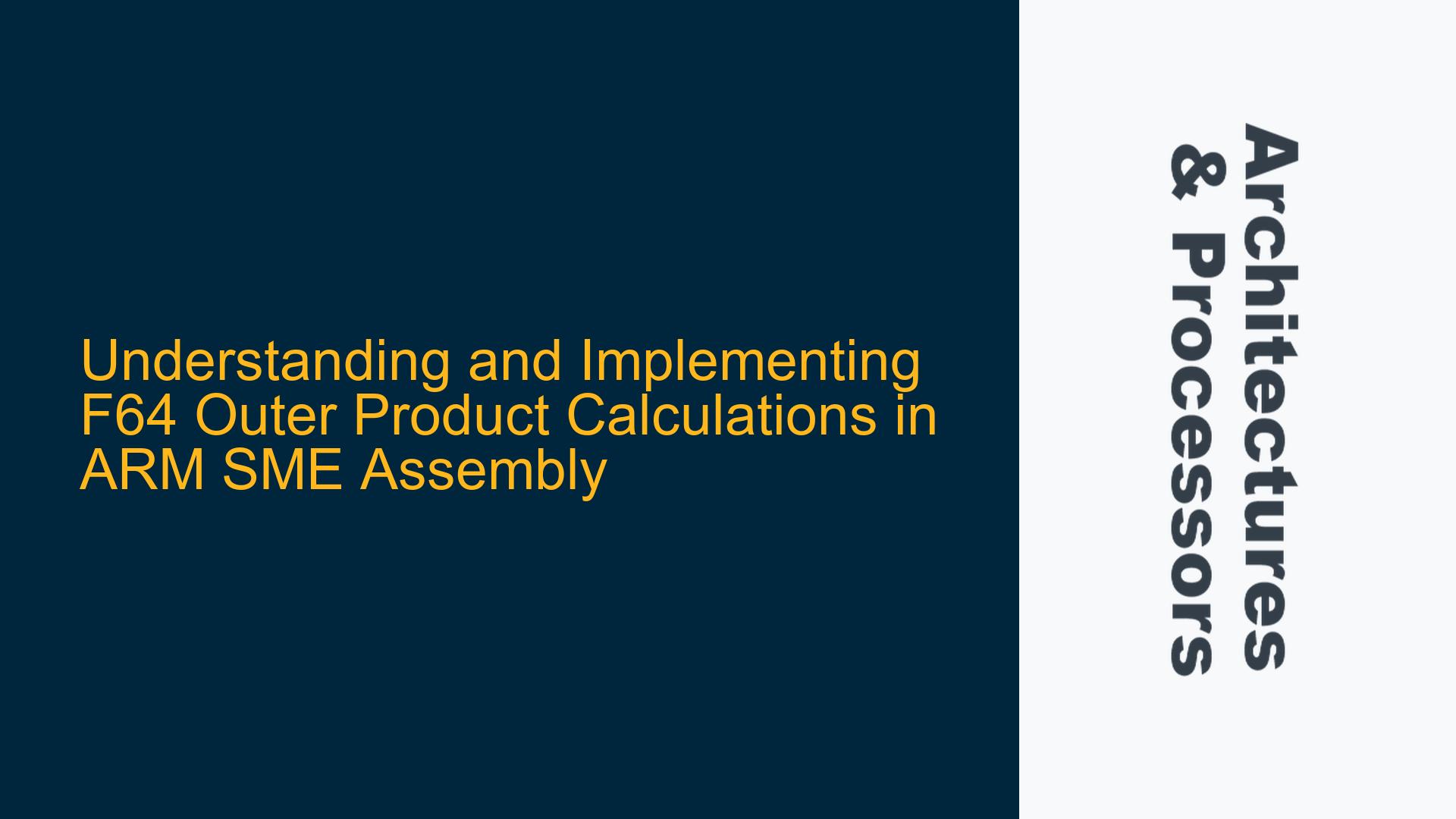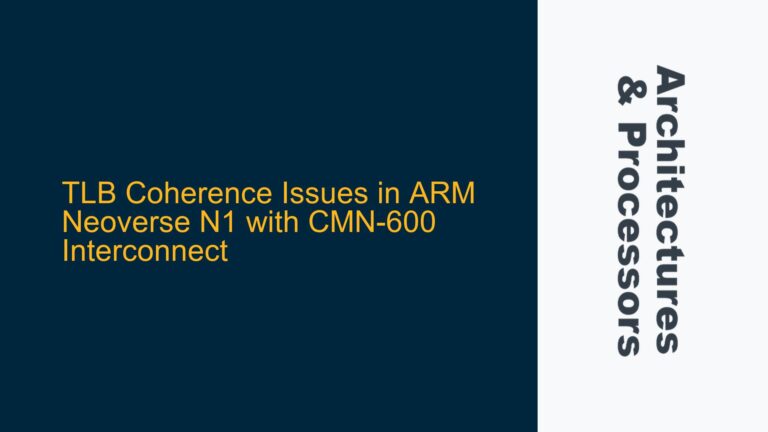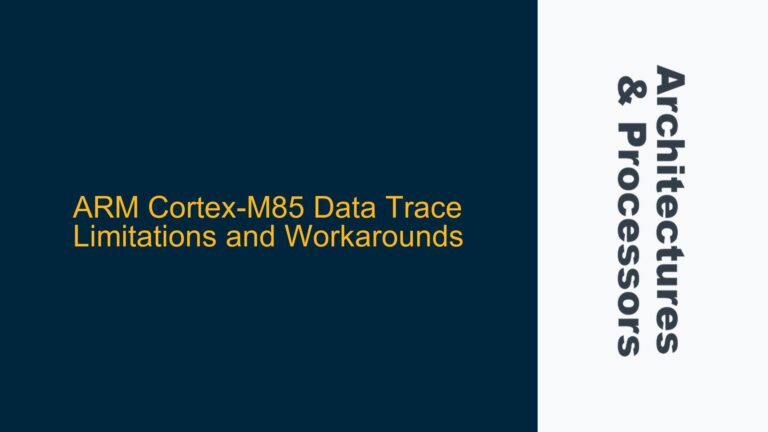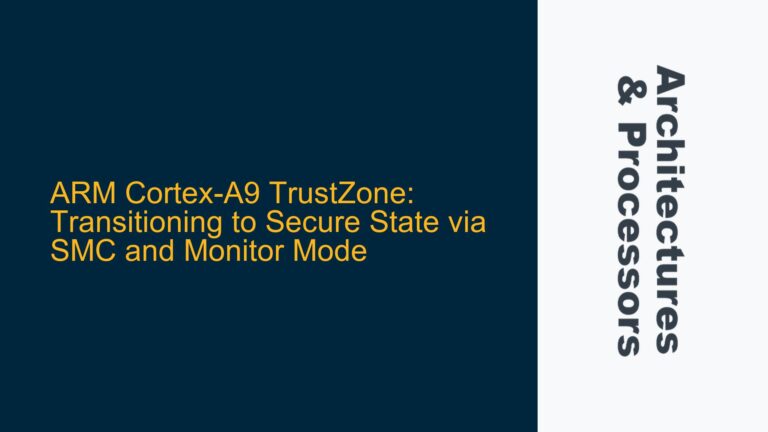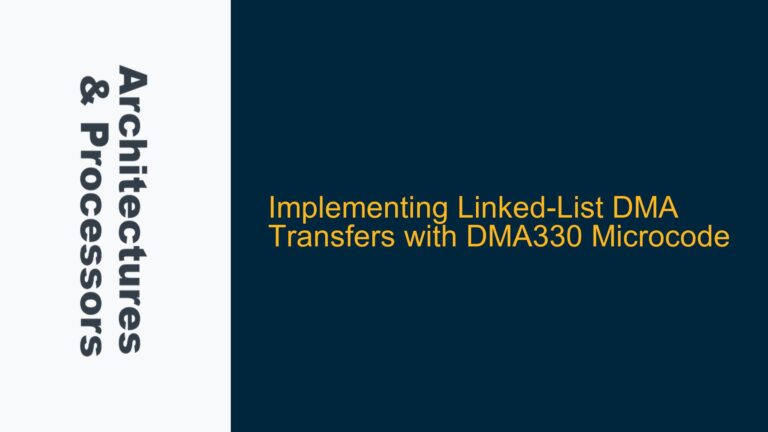ARM SME Assembly: Challenges with F64 Outer Product Calculations
The Scalable Matrix Extension (SME) in ARM architectures introduces powerful capabilities for matrix operations, including outer product calculations. However, implementing floating-point 64-bit (F64) outer products in SME assembly can be challenging due to the complexity of the instruction set, the need for precise memory management, and the lack of readily available examples. This guide delves into the core issues surrounding F64 outer product calculations in ARM SME assembly, explores potential causes of implementation difficulties, and provides detailed troubleshooting steps and solutions.
Memory Management and Instruction Set Complexity in SME
One of the primary challenges in implementing F64 outer product calculations in ARM SME assembly lies in the intricate memory management requirements and the complexity of the SME instruction set. SME introduces a variety of new instructions and registers designed to handle matrix operations efficiently. However, these instructions often require careful configuration and synchronization to ensure correct operation.
The SME architecture utilizes a combination of streaming vector registers (Z registers) and predicate registers (P registers) to manage data flow and control matrix operations. For F64 outer product calculations, the data must be loaded into the appropriate Z registers, and the P registers must be configured to control the flow of operations. This process can be error-prone, especially for beginners, as it requires a deep understanding of the SME instruction set and the underlying hardware architecture.
Moreover, the memory management in SME involves handling large datasets, which can lead to performance bottlenecks if not managed correctly. The architecture supports streaming mode, which allows for continuous data flow, but this mode requires precise control over memory access patterns to avoid cache misses and ensure data coherency. Misconfigurations in memory management can result in incorrect calculations or significant performance degradation.
Potential Causes of Implementation Difficulties
Several factors contribute to the difficulties in implementing F64 outer product calculations in ARM SME assembly. One of the main causes is the lack of comprehensive documentation and examples specifically tailored to F64 operations. While the SME Programmer’s Guide provides a wealth of information, it may not cover all the nuances of F64 outer product calculations, leaving developers to extrapolate from other examples.
Another significant cause is the complexity of the SME instruction set itself. The instructions for matrix operations are highly specialized and require a thorough understanding of their behavior and interactions. For instance, the FMOPA (Floating-point Matrix Outer Product Accumulate) instruction, which is central to outer product calculations, has specific requirements for register usage and data alignment. Misusing these instructions can lead to incorrect results or runtime errors.
Additionally, the performance optimization of F64 outer product calculations in SME assembly can be challenging. The architecture’s streaming mode and vectorized operations offer significant performance benefits, but achieving optimal performance requires careful tuning of memory access patterns, instruction scheduling, and data alignment. Without proper optimization, the calculations may suffer from high latency and low throughput.
Detailed Troubleshooting Steps and Solutions
To address the challenges of implementing F64 outer product calculations in ARM SME assembly, developers can follow a series of detailed troubleshooting steps and solutions. These steps focus on understanding the SME instruction set, optimizing memory management, and ensuring correct configuration of registers and instructions.
Understanding the SME Instruction Set
The first step in troubleshooting F64 outer product calculations is to gain a deep understanding of the SME instruction set, particularly the instructions related to matrix operations. Developers should familiarize themselves with the FMOPA instruction, which performs floating-point matrix outer product accumulation. This instruction requires specific configurations of Z and P registers, and understanding its behavior is crucial for correct implementation.
Developers should also explore other relevant instructions, such as LD1D (Load Single 64-bit Element) and ST1D (Store Single 64-bit Element), which are used for loading and storing F64 data. These instructions must be used in conjunction with FMOPA to ensure that the data is correctly loaded into the Z registers and that the results are stored back to memory.
Optimizing Memory Management
Memory management is a critical aspect of implementing F64 outer product calculations in SME assembly. Developers should focus on optimizing memory access patterns to minimize cache misses and ensure data coherency. This involves carefully planning the layout of data in memory and using streaming mode effectively.
One approach to optimizing memory management is to use the PRFM (Prefetch Memory) instruction to prefetch data into the cache before it is needed. This can help reduce latency and improve throughput. Additionally, developers should consider using the DMB (Data Memory Barrier) instruction to ensure that memory operations are correctly synchronized, especially in multi-threaded environments.
Configuring Registers and Instructions
Correct configuration of registers and instructions is essential for the successful implementation of F64 outer product calculations. Developers should ensure that the Z registers are correctly initialized with the input data and that the P registers are configured to control the flow of operations.
For example, when using the FMOPA instruction, developers must ensure that the Z registers contain the correct input matrices and that the P registers are set to control the accumulation of results. Misconfigurations in register usage can lead to incorrect calculations or runtime errors.
Performance Optimization
Performance optimization is another critical aspect of implementing F64 outer product calculations in SME assembly. Developers should focus on tuning instruction scheduling, data alignment, and memory access patterns to achieve optimal performance.
One technique for performance optimization is to use loop unrolling to reduce the overhead of loop control instructions. By unrolling loops, developers can increase the number of instructions executed per iteration, which can improve throughput. Additionally, developers should consider using vectorized operations to maximize the utilization of the SME architecture’s vector processing capabilities.
Example Implementation
To illustrate the concepts discussed, here is an example implementation of an F64 outer product calculation in ARM SME assembly:
// Load input matrices into Z registers
LD1D {Z0.D}, P0/Z, [X0] // Load matrix A into Z0
LD1D {Z1.D}, P1/Z, [X1] // Load matrix B into Z1
// Initialize accumulator register
MOV Z2.D, #0 // Initialize Z2 to zero
// Perform outer product accumulation
FMOPA Z2.D, P0, Z0.D, Z1.D // Accumulate outer product in Z2
// Store result back to memory
ST1D {Z2.D}, P2, [X2] // Store result matrix to memory
In this example, the LD1D instructions load the input matrices into the Z registers, and the FMOPA instruction performs the outer product accumulation. The result is then stored back to memory using the ST1D instruction.
Conclusion
Implementing F64 outer product calculations in ARM SME assembly requires a deep understanding of the SME instruction set, careful memory management, and precise configuration of registers and instructions. By following the troubleshooting steps and solutions outlined in this guide, developers can overcome the challenges associated with F64 outer product calculations and achieve optimal performance in their implementations. With the right approach, the powerful capabilities of the ARM SME architecture can be fully leveraged to perform complex matrix operations efficiently and accurately.
